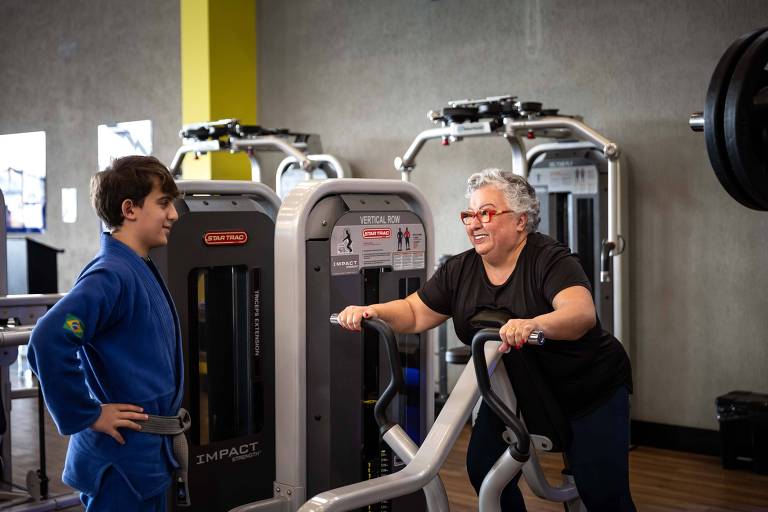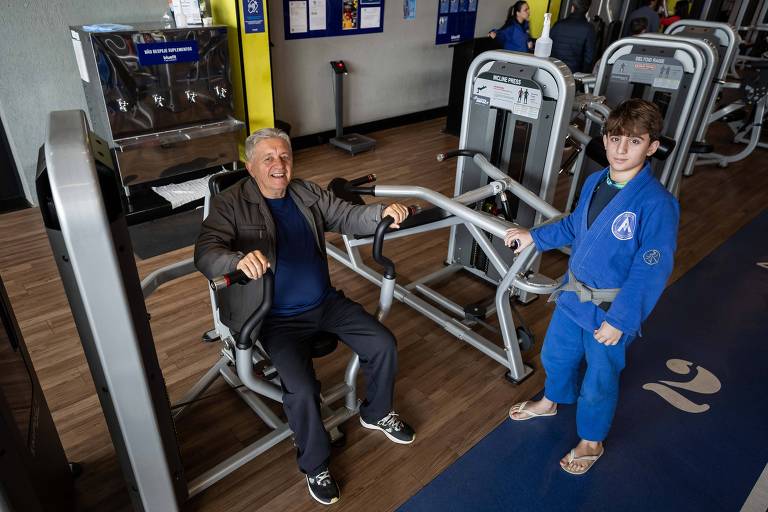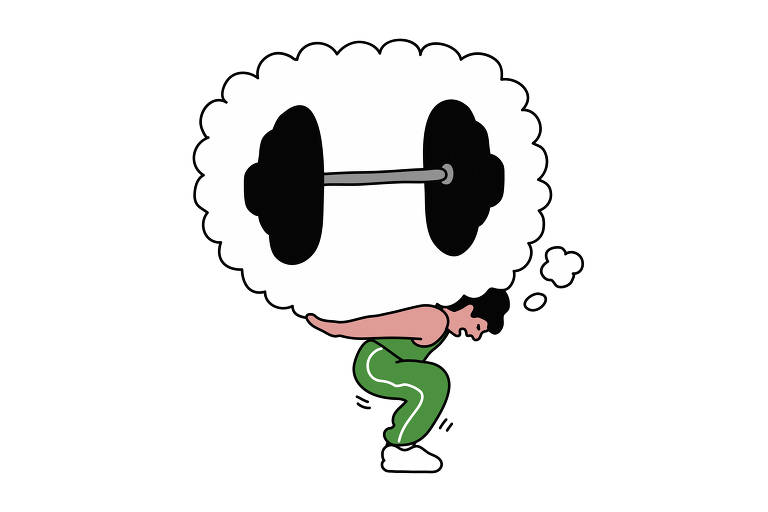Grandparents practice physical activity encouraged by their grandchildren

Celina, 68, and Joseilton Dias, 71, will spend this Saturday (26), Grandparents' Day, at the gym with their grandchildren. Although they are still young, they encourage their grandparents to practice physical exercise, which provides benefits to physical and cognitive health .
The retired couple has been working out for eight months at the gym near their home—previously, they only went for walks—where they live in Vila Liviero, in the south of São Paulo. He, who has moderate-stage Parkinson's disease , says that not even the symptoms of the disease stopped him from starting to exercise.
"I'm a bit lazy, I go three or four days a week, but my husband goes every day, Monday through Sunday. He does the treadmill and weight training," says Celina. "Our routine is to wake up early, have breakfast, and go to the gym. We spend about an hour and a half to two hours there," she adds.

It was their daughter, Karina, who enrolled them in the gym, but Celina says that her grandchildren play an important role in encouraging physical exercise.
"The oldest, Murilo, 13, practices jiu-jitsu and plays soccer. Luísa, 6, does several activities at school, including judo. Maria Clara, 8, and João Pedro, 10, play tennis. They make me go to the gym every day," says the grandmother.
She says she's already noticing changes in her own health and in the health of her husband, who was diagnosed with Parkinson's in 2020. "The change is in his motor coordination, his willingness to walk, travel, and all tasks inside and outside the home."
"From a medical and scientific point of view, there is no age limit to start physical activity," says Naira Hossepian Hojaij, geriatrician and coordinator of the advanced Geriatrics unit at Hospital Sírio-Libanês.
From a medical and scientific point of view, there is no age limit to start physical activity
"There are studies that show that strength training really brings benefits, both in [combating] pain and in joint and movement quality," she says about strength training.
The biggest challenge, according to Hojaij, is convincing older people that it's worth starting, especially those who experience joint pain or extreme physical fatigue.
"It's important to understand that older adults may experience more pain, because, in addition to joint pain, exercise also causes muscle pain. But if we wait a few months, the benefits will be much greater later on, with less pain and greater functionality," says the geriatrician.
Hojaij says that the diagnosis of chronic diseases does not prevent the practice of physical activity and that patients with medical clearance can exercise without fear.
Those with osteoarthritis can also exercise and expect improvements, except in the last stage of the disease, especially in the hip, when surgery is necessary.
Older adults with advanced Parkinson's may be unable to exercise due to muscle stiffness. However, if they can, they may benefit from cognitive and sensory stimulation and muscle preservation.
Exercise can also improve osteoporosis . "Porous bone depends on traction to renew itself. That's why traction exercises are best, such as elastic bands and Pilates techniques," says Hojaij.
For Alzheimer 's patients, any physical activity provides cognitive improvement, according to studies. "The important thing is for the patient to be active in every way. This can be an intensified daily activity they already do. If you add physical therapy or strength training, there will be greater benefits," says the geriatrician.
For patients with diabetes , research shows that exercising, even just twice a week , reduces the risk of death.
Patients with heart disease should undergo a medical evaluation to determine which activity is best for their case.
In all situations, it's important to be aware of signs of pain. The geriatrician also states that persistent joint pain may indicate that "the movement is overloading the joint." Therefore, it's essential to be monitored by a qualified physical trainer who will perform an assessment before starting this new habit.
In addition to exercise, Joseilton says he's returned to his studies through EJA (Youth and Adult Education) in evening classes, exclusively for seniors. He also does crossword puzzles, does some carpentry work, and sells honey.
Celina also says she never stops. "I crochet, I oil paint on canvas, I have a small sewing studio, I make all kinds of costumes, I love karaoke, I have my own at home so I can sing and listen to my music while having a beer. All this so I don't sit still. As I get older, the more activities, the better."
uol







